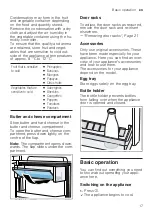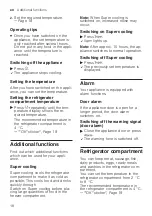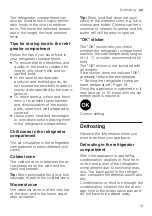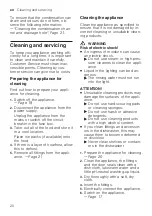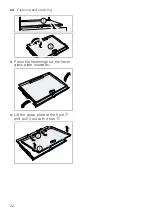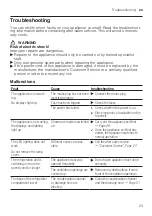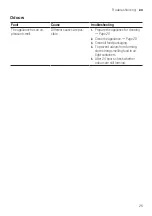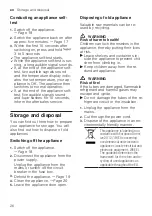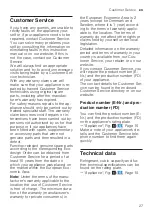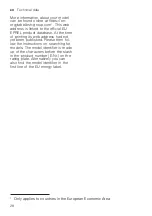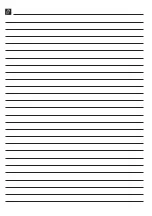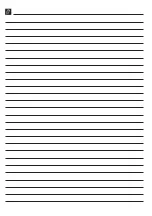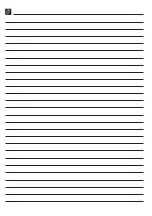
Defrosting
en
19
The refrigerator compartment can
also be used to store highly perish-
able foods in the short to medium
term. The lower the selected temper-
ature, the longer the food remains
fresh.
Tips for storing food in the refri-
gerator compartment
Follow the tips if you store food in
your refrigerator compartment.
¡
To ensure that the freshness and
quality of the food is retained for
longer, only store fresh and un-
spoiled food.
¡
In the case of ready-made
products and bottled goods, do
not exceed the best-before date or
use-by date specified by the manu-
facturer.
¡
To retain aroma, colour and fresh-
ness or to prevent taste transfer
and discolouration of the plastic
parts, store food well wrapped or
covered.
¡
Leave warm food and beverages
to cool down before placing them
in the refrigerator compartment.
Chill zones in the refrigerator
compartment
The air circulation in the refrigerator
compartment creates different chill
zones.
Coldest zone
The coldest zone is between the ar-
row stamped on the side and the
shelf underneath.
Tip:
Store perishable food (e.g. fish,
sausage, meat) in the coldest zone.
Warmest zone
The warmest zone is at the very top
of the door and in the lower veget-
able container.
Tip:
Store food that does not spoil
easily in the warmest zone, e.g. hard
cheese and butter. Cheese can then
continue to release its aroma and the
butter will still be easy to spread.
"OK" sticker
The "OK" sticker lets you check
whether the refrigerator compartment
reaches the safe temperature ranges
of +4 °C or colder recommended for
food.
The "OK" sticker is not included with
all models.
If the sticker does not indicate "OK",
gradually reduce the temperature.
→
"Setting the refrigerator compart-
Once the appliance is switched on, it
may take up to 12 hours until the set
temperature is reached.
Correct setting
Defrosting
Defrosting
Observe the information when you
want to defrost your appliance.
Defrosting in the refrigerator
compartment
When the appliance is operating,
condensation droplets or frost form
on the rear panel of the refrigerator
compartment due to functional reas-
ons. The back panel in the refriger-
ator compartment defrosts automatic-
ally.
Condensation or frost run through the
condensation channel into the drain-
age hole to the evaporation pan and
do not have to be wiped away.
Summary of Contents for KI1813FE0G
Page 1: ...Refrigerator en User manual KI181...
Page 3: ...en 3 Customer Service 27 Product number E Nr and pro duction number FD 27 Technical data 27...
Page 9: ...Safety en 9 Call after sales service Page 27...
Page 29: ......
Page 30: ......
Page 31: ......













